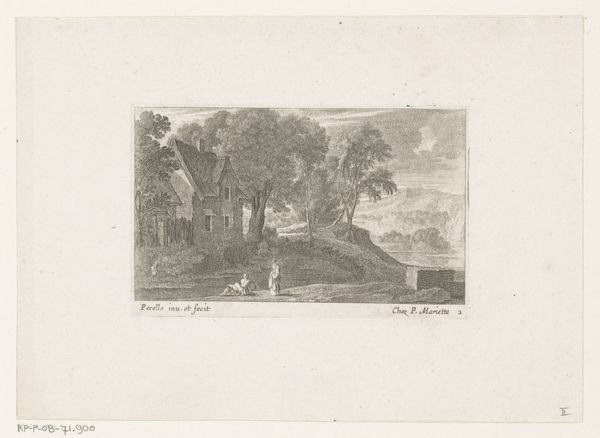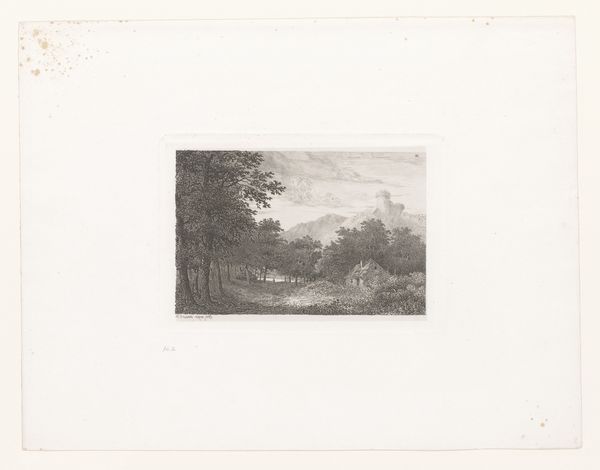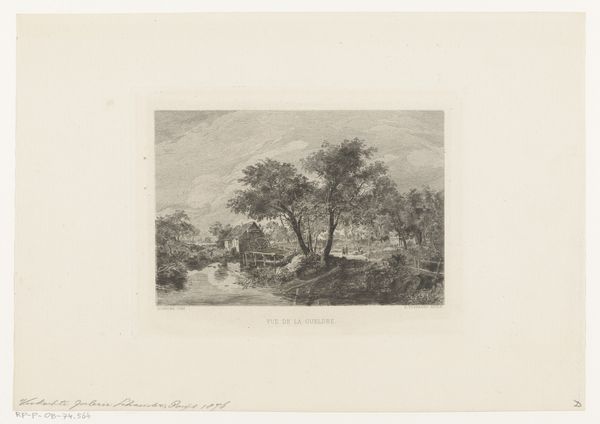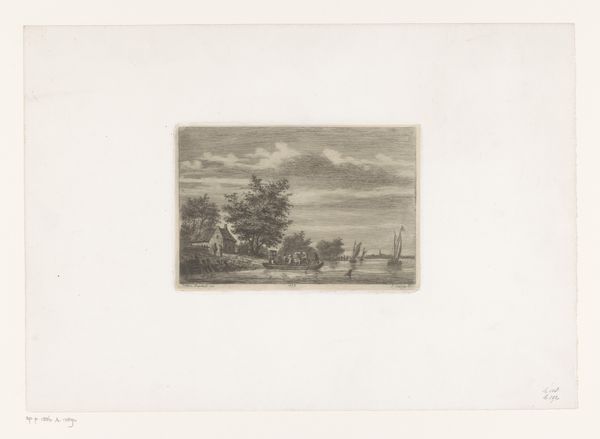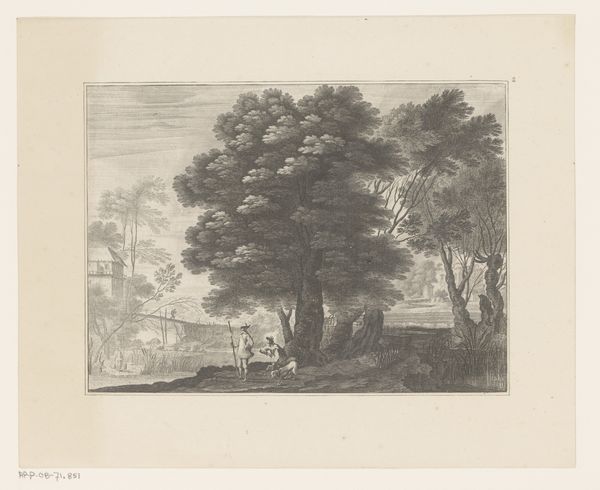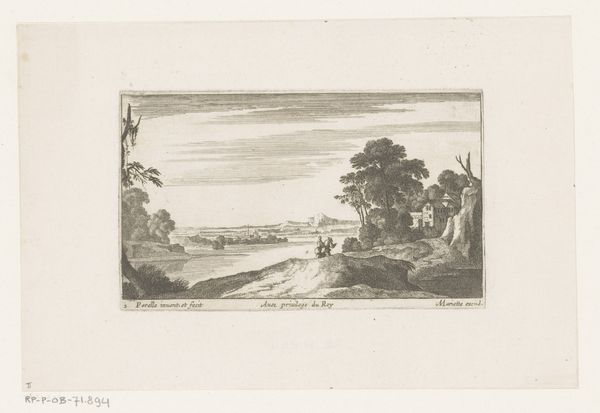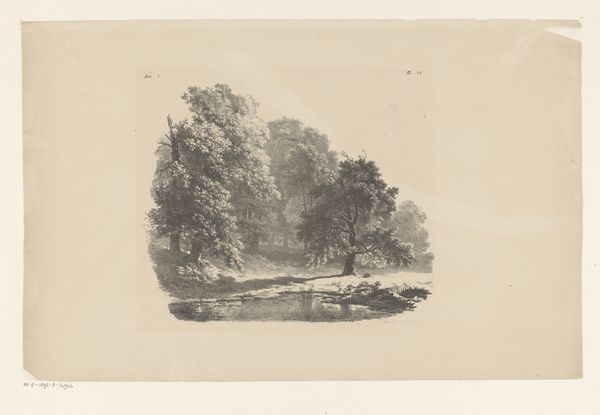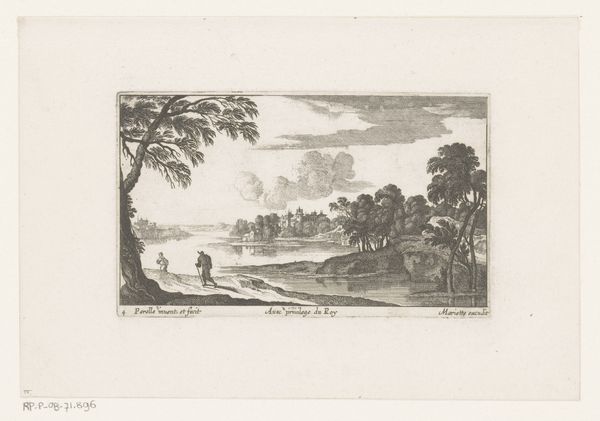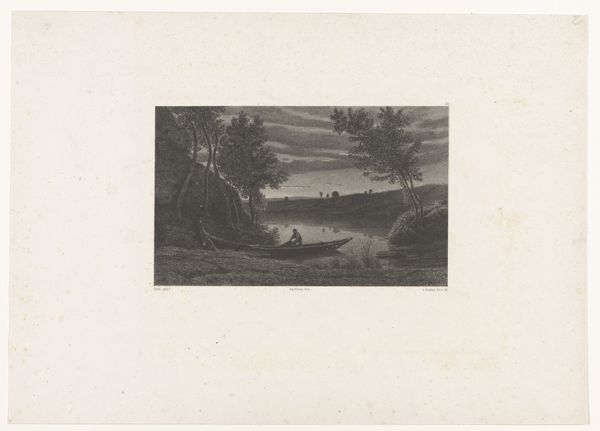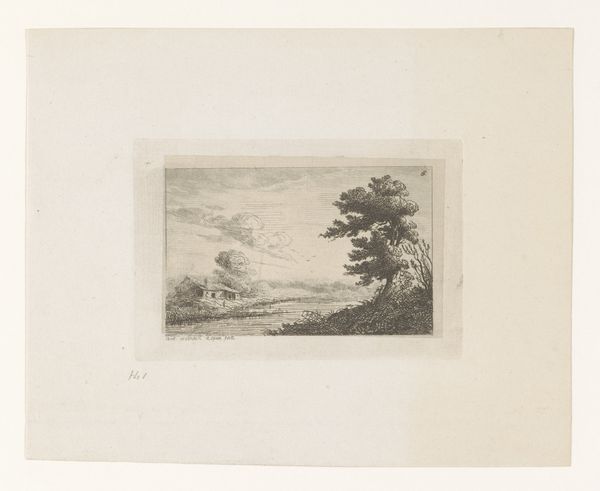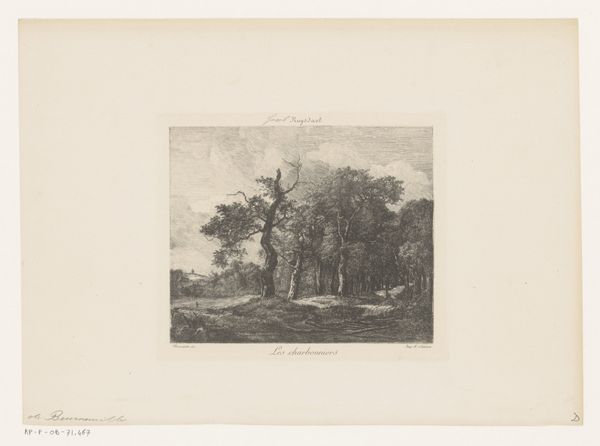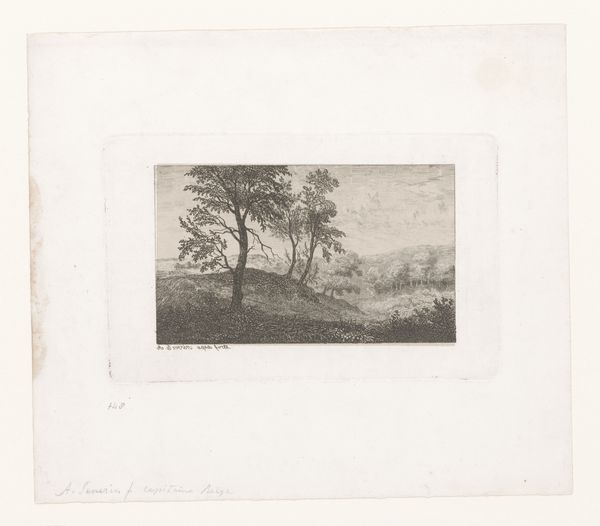
etching, engraving
#
baroque
#
dutch-golden-age
#
etching
#
old engraving style
#
landscape
#
line
#
genre-painting
#
engraving
#
realism
Dimensions: height 78 mm, width 122 mm
Copyright: Rijks Museum: Open Domain
Curator: Ah, here we have Nicolas Perelle's "River Landscape with Women Washing Clothes", created sometime between 1613 and 1695. A rather evocative scene etched with remarkable detail. Editor: It really is, isn't it? Gives me a sense of gentle industry, like a quietly humming engine of domesticity embedded right in the lap of nature. Almost poetic how it depicts something quite mundane. Curator: It’s important to remember how landscapes were often used in the Dutch Golden Age. While seemingly simple, works like this played a crucial role in constructing national identity. They celebrated the cultivated and productive land as a source of wealth and moral virtue. Notice the careful composition—how Perelle guides our eye through the scene? Editor: Absolutely! The eye is drawn in almost hypnotically. The figures doing their washing become a dance. They feel…connected to the rhythm of the place. I can almost hear the splash of the water and chatter of the women. The lighting really adds to the mood, soft and dappled like the close of summer. Curator: The level of detail achieved through the etching is remarkable for the time, wouldn't you agree? It shows the intersection of nature and everyday life within specific societal conventions of the 17th century, where hard work and piety were highly valued. Editor: Indeed! The use of line in particular sings to me, there's such delicacy. Also, I can't help but wonder what stories each of these women carries, and how washing day might be both a burden and an act of communal support. Perhaps even an opportunity for connection. The tiny gestures create a bigger world. Curator: And by emphasizing labor as a core theme, Perelle reinforces the ideal social order. Art of this time was rarely purely aesthetic—it often had didactic or political functions. It spoke to who people thought they were and should be. Editor: Well, it just goes to show how art can hold a mirror to our history. Thanks for that, and this lovely river view. Curator: My pleasure. Thank you for offering your colorful insights and unique outlook.
Comments
No comments
Be the first to comment and join the conversation on the ultimate creative platform.
